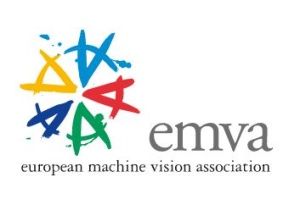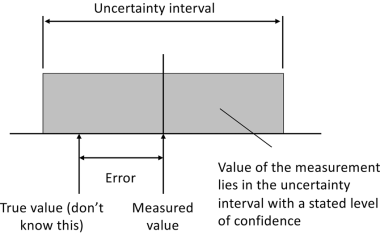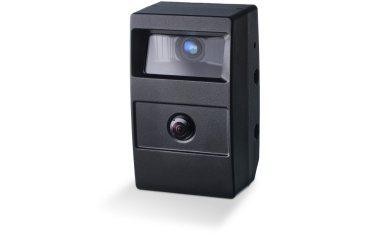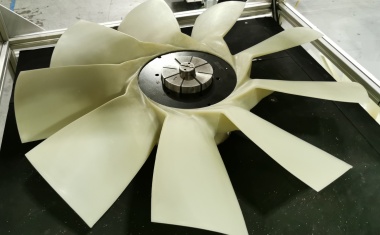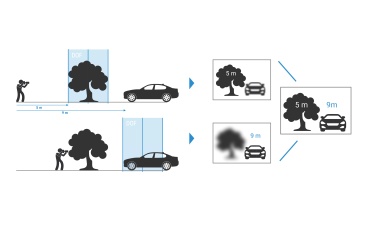Machine Vision in Europe Returns to Growth
The financial and economic crisis of 2009 had severe effects on the European machine vision industry. However, the results of the European Vision Technology Market Statistics 2010, the annual market survey conducted by the European Machine Vision Association EMVA, point to a positive development of turnover with European machine vision products in 2010.
Industrial production still accounts for the biggest part of the recorded turnover with machine vision systems and components out of Europe. However, the so-called non-industrial applications continue to rise in importance. Vision applications more and more conquer areas such as safety and security, health care, market research, as well as environmental technologies, sports and electronic entertainment. At the same time, the integration of machine vision into machinery will continue, up to a point where the technology becomes a core part of the machine and is no longer a mere add-on to it.
While inspection remains the largest application area of machine vision technology, 3D metrology is the big winner in applications in 2009. The trend towards 3D is supported by new developments of manufacturers of cameras as well as smart cameras and providers of machine vision software.
Significant Sales Collapse in 2009
The recorded sales volume of the European market study reached almost € 738.6 million in 2009, a decline of 21.4 % compared to the year before. 72.6 % of the total sales were realized within Europe. Sales to Germany - the largest market for machine vision products in Europe - declined by 23.7 %, while the decrease of supplies to Italy was somewhat smaller with 19.7 %. Sales to the United Kingdom and Ireland went down by 12.5 %, and also France saw a relatively moderate decrease in turnover of 12.1 %. The only countries in Europe that saw an increase in absolute sales have been Spain and Portugal, here turnover increased by 4.8 % compared to 2008. Exports to the Americas decreased by 24.2 %, and thus above average. Compared to this, the business with Asia was more robust: Turnover with all customers in Asia declined by 18.8 %. Here, exports to Taiwan and Japan were hit most, while sales to South Korea even managed to increase by 14 % (see fig. 1). Overall, exports to overseas accounted for 27.3 % of the total turnover.
Sales of vision systems accounted for 51.6 % of the total turnover, and turnover with vision components had a 43.7 % share in 2009. The overall decrease of total turnover in 2009 is distributed almost equally amongst the two product categories: sales of all vision systems declined by 22.1 % in 2009, and turnover with vision components decreased by 21.4 %. All product types were deeply affected by the crisis. The decrease ranged between 10.6 % for other vision accessories and 33.6 % for smart cameras. Among the vision systems, configurable systems proved to be the most resilient to the economic downturn, however also they saw a double-digit decrease in sales by 14.5 %. Recorded sales of application-specific vision systems - which have the highest share of total turnover with 37.5 % - decreased by 22.3 % or in absolute numbers from € 356.9 million in 2008 to € 277.3 million in 2009. Sales of cameras - the second largest product type in terms of turnover with a share of 28.1 % in 2009 - went down by 20.5 %, or from € 261.3 million in 2008 to € 207.8 million last year.
Vision Companies Managed to Keep Their Staff
Overall, machine vision companies in Europe have reduced their personnel underproportionally to the decline of turnover in 2009. The industry characterized by small and medium sized companies is rather independent from short-term shareholder-value pressure, and growth strategies focus more on the medium- and long term success. Furthermore, the companies are well aware of the costs that occur for training new people when the economy picks up again.
On average, in 2009, the companies in Europe employed 29 people, with a peak in Germany: here the average vision company employed 32 people. Italian companies are below the European average, on average they have 16 employees on board. British vision companies are even smaller: their staff size is at eight employees on average. With 86 %, the vast majority of machine vision enterprises in Europe employed less than 50 people in 2009. Almost every second machine vision company in Europe has ten employees or fewer and can be counted as a small enterprise.
Turnover Increase in Non-manufacturing Sector
Never before has the distribution of total turnover share of the different customer industries been as balanced as in 2009. Three sectors had a double-digit total turnover share: The automotive industry (18.2 %), the non-manufacturing industries (16.1 %), and the glass industry (10 %). Another six industry sectors range between a 5 % to 10 % share of total turnover, namely the metal industry, the wood and paper industry, the pharmaceutical and cosmetics industry, the semiconductors industry, the electrical/electronics industry, and the rubber and plastics industry (see fig. 2). This development goes mainly at the expense of the automotive industry, as this key industry was severely hit by the financial and economic crisis, and machine vision sales into it declined by 35.3 % in 2009. Combined, all manufacturing sectors closed with a minus of 27.6 % in 2009, while the non-manufacturing sector increased turnover by 29.4 %. The non-manufacturing sector now accounts for 16.1 % (2008: 9.7 %). This is quite a remarkable shift that underlines the large growth potential of non-manufacturing applications in the future.
3D Metrology Gains Ground
Among the applications of European vision technology, inspection is still by far the main one. Together, inspection of discrete parts and inspection of webbed material made up a share of 50.3 % of total turnover by all vision applications in 2009, down from 61.9 % in 2008. With 32 %, the inspection of discrete parts was again by far the most important application of machine vision technology, but saw a huge decline in the crisis year. The lower demand in customer industries that produce end consumer products such as automobiles had a huge impact here. On the other hand, continuous inspection managed to gain some share of total turnover and increased from 17 % in 2008 to 18.3 % in 2009. The largest increase of total turnover was seen in 3D metrology. Here the share grew from 10 % to 15.8 % in 2009. This trend is expected to continue since the still relatively new 3D technology is about to conquer new application fields. Guidance, character recognition and symbol reading are other applications that managed to gain some share of total turnover in 2009, whereas 2D metrology and part recognition lost some ground.
11 % Growth Expected for 2010
Clearly, 2009 has been the most difficult year ever for the European machine vision industry. However, industrial imaging remains a vital component in the automation business, and European suppliers are amongst the leaders in providing machine vision technology. Thus, it is likely that business recovers again. In addition, clear signs for a recovery of the world economy have been on the horizon since the end of 2009. This is supported by a key indicator to the machine vision industry: The worldwide turnover of machinery sales is forecast to grow by 9 % in 2010. This points to a favorable business climate in the traditional industrial application areas of machine vision. Positive signals also come from almost all other customer industries. Overall, total turnover of machine vision in Europe is expected to increase by 11 % in 2010, with the markets in the Americas and Asia being the main drivers (see fig. 3).
EMVA Market Study
The „European Vision Technology Market Statistics" is an annual industry study issued by the European Machine Vision Association (EMVA). Data from 205 companies in the European machine vision industry have been evaluated for the 2010 edition of this report. Data for the report has been primarily collected directly from the companies in a questionnaire-based survey, complemented by numerous interviews with experts across Europe.
Industry sales in the survey are broken down to regions, product types, applications, and customer industries. In addition to the European statistics, readers now find three country-specific reports covering machine vision in Germany, Italy and - for the first time - in the United Kingdom. The survey does not only address enterprises in the machine vision industry, it can also serve as a valuable tool for stakeholders from all industry related areas who wish to find out more about the market, trends and developments. The 2010 study can be obtained directly from the EMVA.
Company
